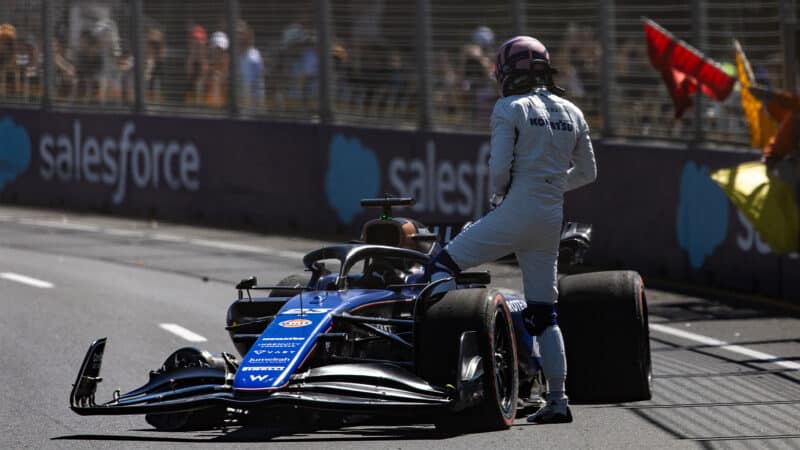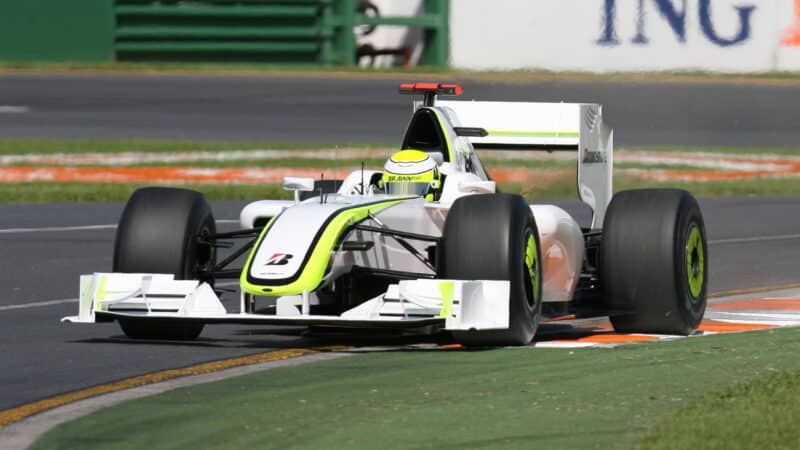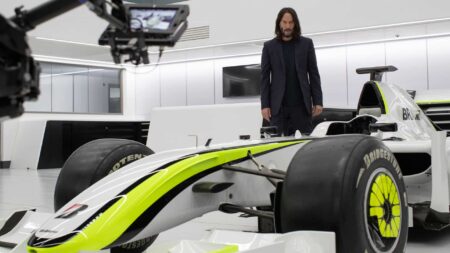Things almost went awry on the first lap of the race. Button got cleanly away into the lead but Barrichello made a terrible start and dropped to ninth and into Turn 1 was hit by Heikki Kovalainen’s McLaren into Mark Webber’s Red Bull. Kovalainen and Webber made contact in the aftermath and damaged their cars but Barrichello had got away without significant damage. One wrecked car at that moment could have changed the team’s whole season.
Button controlled the race from the front, pulling away from Vettel, Felipe Massa (Ferrari) and Robert Kubica (BMW) as Barrichello worked his way through the field. Ten laps in, Barrichello again skated on thin ice, making contact with Kimi Raikkonen’s Ferrari as he passed it for sixth place. He now had some front wing damage, but thankfully it was still in one piece. A safety car frayed the nerves further, but Vowles got Button in at the perfect time for the first of his two pit stops. There was a delay at the second stop from a sticking wheel but such was Button’s margin by then he retained his place. But his cushion was much-reduced.
Barrichello had got himself up to fourth but ahead of him in the closing stages there was a fierce dice for second between Vettel and Kubica. The 2009 BMW was a very poor car and Kubica was performing some sort of miracle in being so far up. He’d done an offset tyre strategy to Vettel whose softer tyres were now fading as Kubica’s were still good. Button was on the same tyres as Vettel and he too was running out of grip. Into the closing stages Kubica could sense a possible rout: if he could just get by Vettel, then Button was vulnerable too. Could the BMW driver snatch a sensational last-gasp victory? On lap 56, two from the end, he hurled himself down Vettel’s inside into Turn 1. Vettel defended but that compromised his line coming out and Kubica was all over him as they raced down to Turn 3, with Vettel assuming the defensive inside line. Kubica was ahead as he turned in but Vettel refused to give him room. They collided and both cars were heavily damaged (probably much to Vowles’ relief). Thus was a Brawn 1-2 secured on what technically was a new team’s debut. And they still had two chassis.
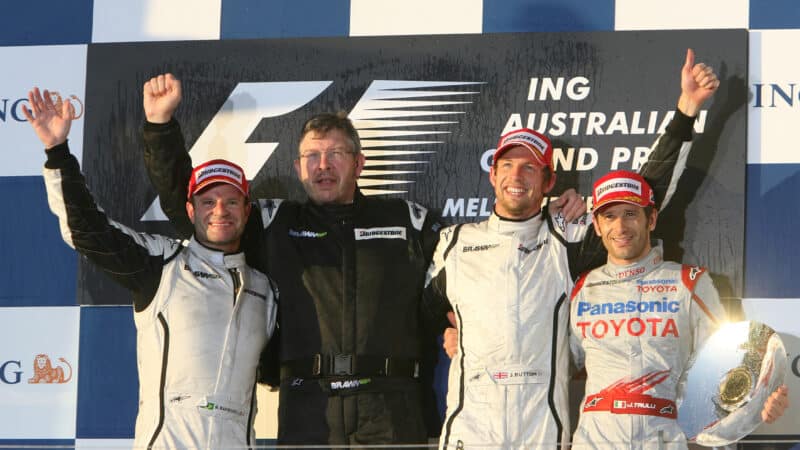
Button (middle right) celebrates win in Melbourne with Ross Brawn (middle left), team-mate Barrichello (far left) and Toyota’s Jarno Trulli (far right)
Grand Prix Photo
Vowles referred back to that lack of spare chassis last weekend. Now team principal at Williams, he has overseen a revolution in the ancient working methods of the team. Doing so seriously delayed the building of the cars pre-season. There are over 10 times as many parts in this car than that of last year! Vowles took the decision a few weeks before the season that they would do the first three races with just two chassis. And hope for the best.
“The plan was to have three chassis at round one,” said Vowles. “We went through large changes in organisation in both processes and technology… There’s a finite amount of resource and as we were going through an inefficient structure and making transformation at the same time, we started to cause problems. Previously those problems might have meant adding metal components or last year’s rear wings. But we didn’t want to do that. So the third chassis started to get delayed and delayed and delayed. We pushed everything to the absolute limit. And the fallout of that is, we didn’t have a spare chassis. Now, even when it was intended to be coming here, at round three, it got delayed and delayed again as other items got pushed back as a result.”
The Williams FW44 is no Brawn GP01. Alex Albon is brilliant at taking it by the scruff of the neck and squeezing a flattering lap time from it. But he pushed just a little too hard on Friday practice on his qualifying simulation through Turns 6-7 (where he crashed out of sixth place in last year’s race), taking a little too much kerb on the exit of 6, coming off it heavily enough to snap-oversteer hard into the wall on the right at very high speed. The chassis was destroyed, the right-front corner with a gaping hole where the suspension punched through, the gearbox cracked in two, the engine mounts bent, the power unit damaged.
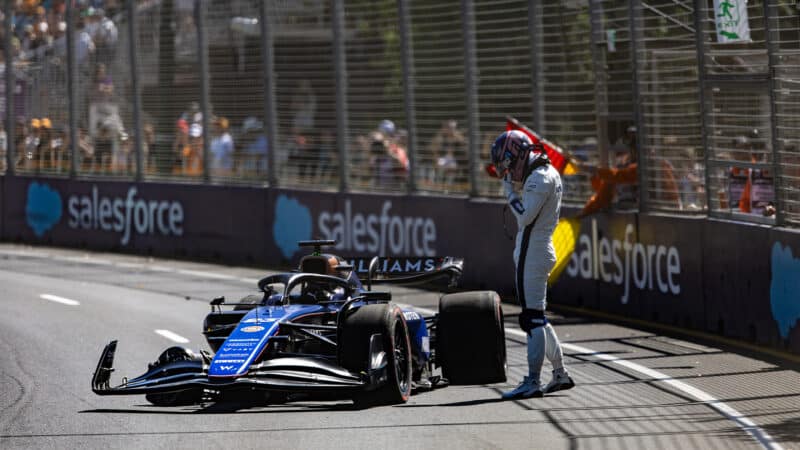
Lack of spare chassis meant Albon took Sargeant’s car after practice crash
Getty Images
So Vowles had a very tough decision to make. The unfortunate victim in this set of circumstances was the team’s other driver Logan Sargeant who had to give up his car to Albon for the rest of the weekend. “There are five very fast teams taking up those top 10 positions and there’s no points unless you’re in the top 10,” Vowles said afterwards. “There’s one point separating the bottom five teams at the moment and so every point will make a difference between now and the end of the year. And in that regard, you therefore put your money on the driver that so far this year, has been slightly ahead of the other one, which is Alex.”
As it happened, Albon couldn’t quite get into the points, losing out in a battle with the Haas team. Now they head to Suzuka — a place where the walls are very solid — with an original chassis and a repaired one. And still no spare.
When you’re running at the front, such choices are less risky. As Button demonstrated back in ’09.

